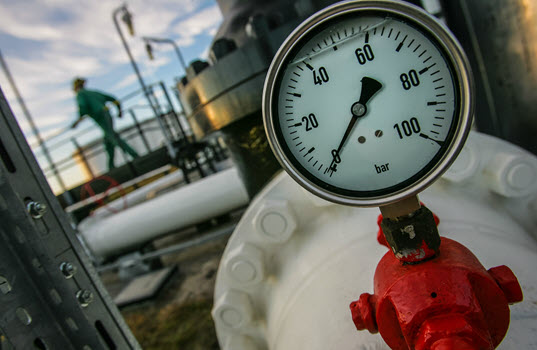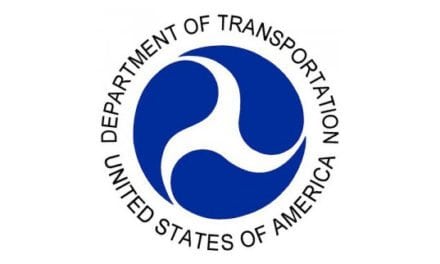“Fueled for Thought”
By Joe O’Brien
Many in the world of underground fueling system equipment are familiar with the idea of a pressure test—a procedure that reveals weaknesses in the system. It is a valuable step in the installation of an underground storage tank and piping because it affords technicians the opportunity to correct problems before the equipment is completely covered by backfill. Demonstrating the integrity of the equipment helps operators safeguard against a preventable hazardous environmental incident before a proverbial “point of no return.”
The entire fueling industry underwent a pressure test of a different sort in 2020. The pandemic caused severe and sudden disruptions, which tested the dynamics of the entire supply line from refinement to distribution. And, while it was the economic principle of supply and demand that was tested instead of physical equipment, areas that require adjustment were identified just the same. Here is a look at a few of those areas for improvement.
Road funding needs to be revamped
COVID-19 had a tremendous impact on fuel consumption in the United States. Gallons of fuel purchased on its worst day in April were down 62% compared with 2019. The year-over-year drop in fuel demand equated to an average purchase of 50 gallons per driver in April 2019 and 39 gallons per driver in April 2020. While demand started ticking up as states re-opened, the steep drop in consumption should serve to remind us that the volume of fuel in the supply chain is not static, and that these dynamic conditions result in broader implications beyond supply and distribution.
Both state and federal gasoline tax revenues have suffered steep declines due to reduced fuel consumption resulting from stay-at-home orders. With an estimated 50% fewer people driving this spring, states saw significant drops in fuel tax revenue even after receiving millions of dollars in federal relief funds. According to an article from Roads and Bridges magazine, $50 billion would be needed to cover the deficit. The American Association of State Highway and Transportation Officials reports that the Department of Transportation expects a 30% average decline in forecasted revenues until about November 2021.
As fuel consumption dropped, refiners struggled with an almost instantaneous surplus of inventory. Recognizing that the surplus occurred at a time when refineries were about to switch from winter to summer formulations, the U.S. Environmental Protection Agency (EPA) issued a waiver on March 27 that permitted winter fuel to be sold until supplies were depleted. While this move did help to facilitate the turnover of storage tanks from winter to summer gasoline and contributed to low gas prices, it also signaled a missed opportunity to simultaneously address the more public-facing predicament: infrastructure revenue.
With motorists enjoying a median gas price of under $2 during April and May, perhaps a temporary 30-day fuel tax increase could have helped reduce some of the fuel tax shortfall? While a temporary tax would have required tact and agility to introduce to the public, at least it would come at time when motorists were benefiting from the lowest fuel prices in recent memory.
The steep drop in demand and subsequent fuel funding shortages are a reminder that fuel taxes are an elastic source of revenue. If the United States wants to provide a consistent source of funding for road repairs, then overhauling the funding structure is necessary. The Committee for Economic Development of The Conference Board outlined five options for increasing transportation funding in 2017, as well as the potential benefits and challenges. Learn more at www.ced.org/reports/fixing-americas-roads-bridges.
Fuel producers are not equipped to adapt to abrupt changes in production needs.
Both oil refineries and ethanol plants were strained by the market conditions in which oil prices plunged and inventories ballooned this spring. The Energy Information Administration’s Weekly Petroleum Status Report showed that only about 69% of refinery capacity was being utilized at the beginning of May. American Fuel & Petrochemical Manufacturers (AFPM) stated in a blog post that, while it varies by refinery, facilities need to shut down when they reach 60-65% utilization “because it becomes infeasible to keep the complex systems of units running.”
During the same time, only 49 of 204 U.S. ethanol plants were running at full capacity, according to the Renewable Fuels Association (RFA). Growth Energy reports that the plants that were able to operate did so at a steep loss. In an April 20 report, the RFA projected that ethanol sales could plummet by 46%, or $10.6 billion.
Light production scenarios escalate the discord over renewable fuels.
With both the petroleum and ethanol production industries suffering, critical feedback about—or in support of—the Renewable Fuels Standard (RFS) surfaced proportionately.
Refiners requested that the EPA grant them RFS waivers, which the ethanol industry has generally viewed as a cop-out. Ethanol advocates suggested the drop in fuel demand effectively waived blending volumes, and the Renewable Identification Number credit system is designed to help refiners weather instabilities such as those predicated by COVID-19.
But the AFPM said physical blending of ethanol into the fuel supply is not the issue, but rather the cost of compliance with refiners operating on tight margins unable to recover their RIN costs. “Although some companies have said that they are able to recover their RIN costs in a typical market, other refiners report they cannot,” wrote Geoff Moody, vice president of government relations for AFPM in a blog post. “These market dynamics vary at the local level, but what doesn’t change is that the refining industry is highly competitive, and it is often difficult to recoup costs.”
Looking Ahead
In the short term, U.S. fuel marketers need to be poised for continued adaptation as customers shift their behaviors in response to the pandemic. Fuel sites that have not yet completed EMV updates or that did not pursue a contactless payment option during EMV upgrades may want to revisit incorporating contactless payment in the interim.
As for the distant future, COVID-19’s impact on fuel production and distribution in 2020 simulated what the petroleum industry could face if global demand shrinks indefinitely. Rather than hoping that this year was just a fluke, every person with a role in the management of the U.S. fuel supply—from our leaders in office to every point in the supply chain—needs to pause to learn from this moment and make preparations for future adjustments.
Joe O’Brien is vice president of Marketing at Source™ North America Corporation. He has more than 25 years of experience in the petroleum equipment fuel industry. Contact him at [email protected] or visit sourcena.com to learn more.
 Joe O’Brien is vice president of marketing at Source North America Corporation. He has more than 25 years of experience in the petroleum equipment fuel industry. Contact him at [email protected] or visit sourcena.com to learn more.
Joe O’Brien is vice president of marketing at Source North America Corporation. He has more than 25 years of experience in the petroleum equipment fuel industry. Contact him at [email protected] or visit sourcena.com to learn more.









